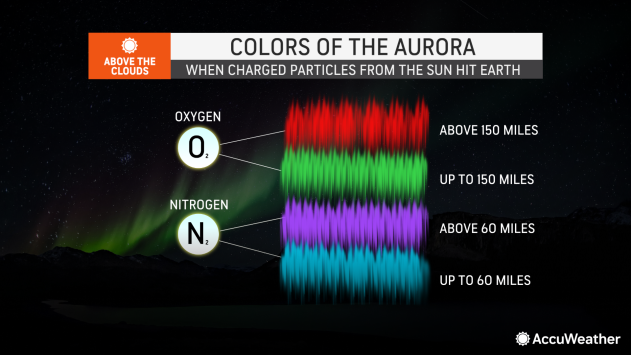Green, red and purple: The colorful science behind the northern lights
Seeing the Aurora Borealis dance in the night sky is a bucket list item for many, and just like snowflakes, no two displays are exactly the same, including the blend of colors.
The northern lights glow to life when charged particles from the sun bombard Earth's atmosphere. The interaction of these particles with oxygen and nitrogen at different altitudes causes various colors to appear in the sky.
 |
Green is the most common color for aurora and appears when charged particles collide with oxygen molecules up to 150 miles above the Earth's surface.
Red is also created by oxygen but in the highest part of the atmosphere at more than 150 miles above the Earth's surface.
Purple and blue are related to nitrogen, with purple lights appearing higher than 60 miles above the ground while blue hues glow below this threshold.
 |
Green, red and purple aurora over Mefjord in Norway. (Getty Images/ Westend61) |
During intense outbursts of the northern lights, onlookers may see three or four colors at the same time.
Want next-level safety, ad-free? Unlock advanced, hyperlocal severe weather alerts when you subscribe to Premium+ on the AccuWeather app. AccuWeather Alerts™ are prompted by our expert meteorologists who monitor and analyze dangerous weather risks 24/7 to keep you and your family safer.




